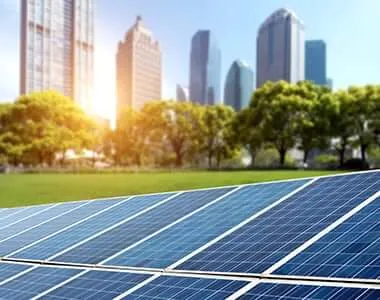bi facial panel
Understanding Bi-Facial Solar Panels A Leap Towards Sustainable Energy
As the world increasingly shifts towards renewable energy sources, bi-facial solar panels are gaining attention for their innovative design and efficiency. Unlike traditional solar panels, which capture sunlight only from one side, bi-facial panels can harness solar energy from both the front and the rear, significantly enhancing their energy output and making them a compelling choice for solar energy systems.
How Bi-Facial Panels Work
Bi-facial solar panels are equipped with solar cells on both sides. This unique configuration allows them to absorb direct sunlight on the front side while utilizing reflective sunlight — or albedo — that bounces off the ground and surrounding surfaces on the rear. This capability not only maximizes the amount of energy produced but also enables these panels to operate more efficiently in various conditions, including snowy or sandy environments where light reflection can be substantial.
Efficiency and Performance Benefits
The dual-sided nature of bi-facial solar panels generally leads to an increase in overall energy generation of 10% to 30% compared to traditional panels, making them an attractive option for both commercial and residential applications. Their performance benefits are further amplified by the use of elevated mounting systems, which facilitate optimal light capture by minimizing shading effects.
bi facial panel

Moreover, bi-facial panels exhibit impressive temperature coefficients, meaning that their efficiency declines less with rising temperatures compared to conventional panels. This attribute is particularly beneficial in regions that experience high heat, ensuring that energy generation remains consistent throughout the day.
Installation Considerations
While the initial cost of bi-facial panels may be higher than their mono-facial counterparts, the long-term energy savings and increased efficiency can justify the investment. To optimize their performance, careful consideration must be given to installation angles and the choice of materials surrounding the panels. Reflective tiling or ground surfaces can further enhance the rear-side energy capture, driving their effectiveness even higher.
Environmental Impact and Future Prospects
Bi-facial solar panels align perfectly with the global agenda to combat climate change and promote sustainable energy practices. By maximizing energy output from a smaller footprint, they help reduce the overall land requirement for solar farms, thus addressing land-use concerns associated with large-scale solar installations.
As technology continues to advance, the production costs of bi-facial panels are expected to decrease, making them more accessible and appealing to a broader audience. Given the current trends in energy production and the urgent need to transition to renewable sources, bi-facial solar panels represent a significant evolution in solar technology, paving the way for a greener and more sustainable future.
-
String Solar Inverter: The High-Efficiency Solution for Smart Solar EnergyNewsJul.14,2025
-
Revolutionizing Rooftop Energy with the Power of the Micro Solar InverterNewsJul.14,2025
-
Power Independence with Smart Off Grid Solar Inverter SolutionsNewsJul.14,2025
-
On Grid Solar Inverter: Powering the Future with Smart Grid IntegrationNewsJul.14,2025
-
Monocrystalline Solar Panels: High-Efficiency Power for the Future of Clean EnergyNewsJul.14,2025
-
Bifacial Solar Panel: A Smarter Investment for Next-Generation Energy SystemsNewsJul.14,2025







